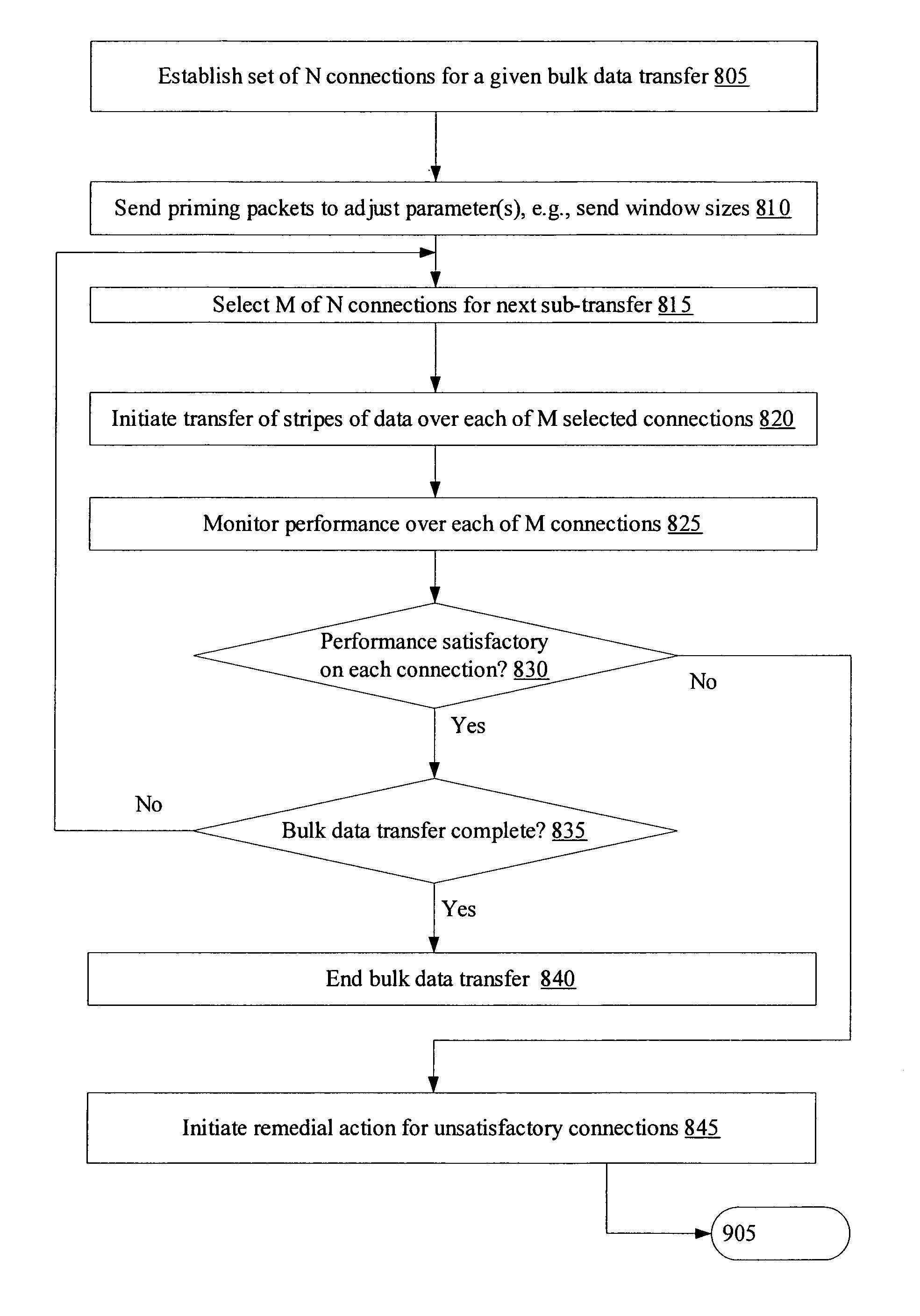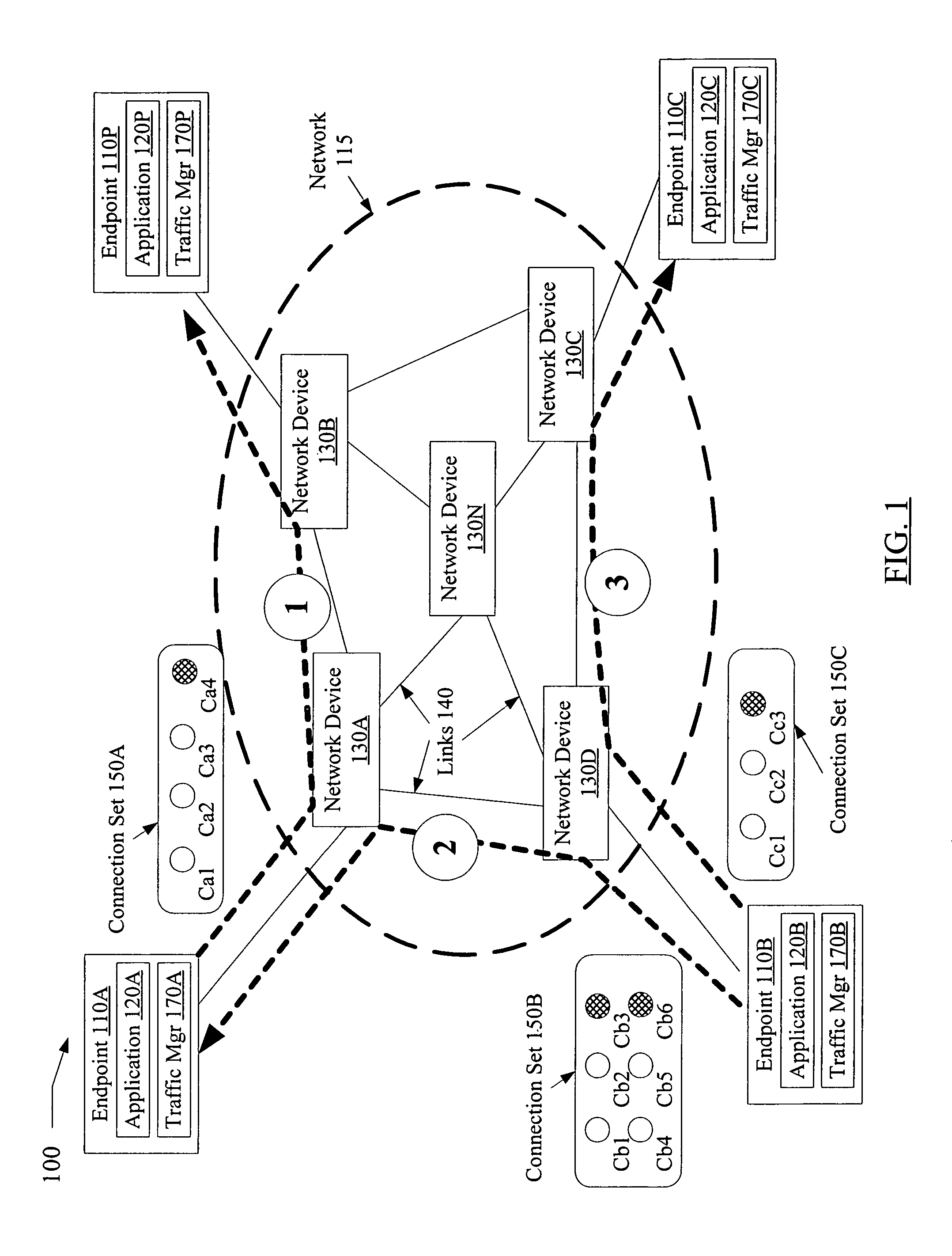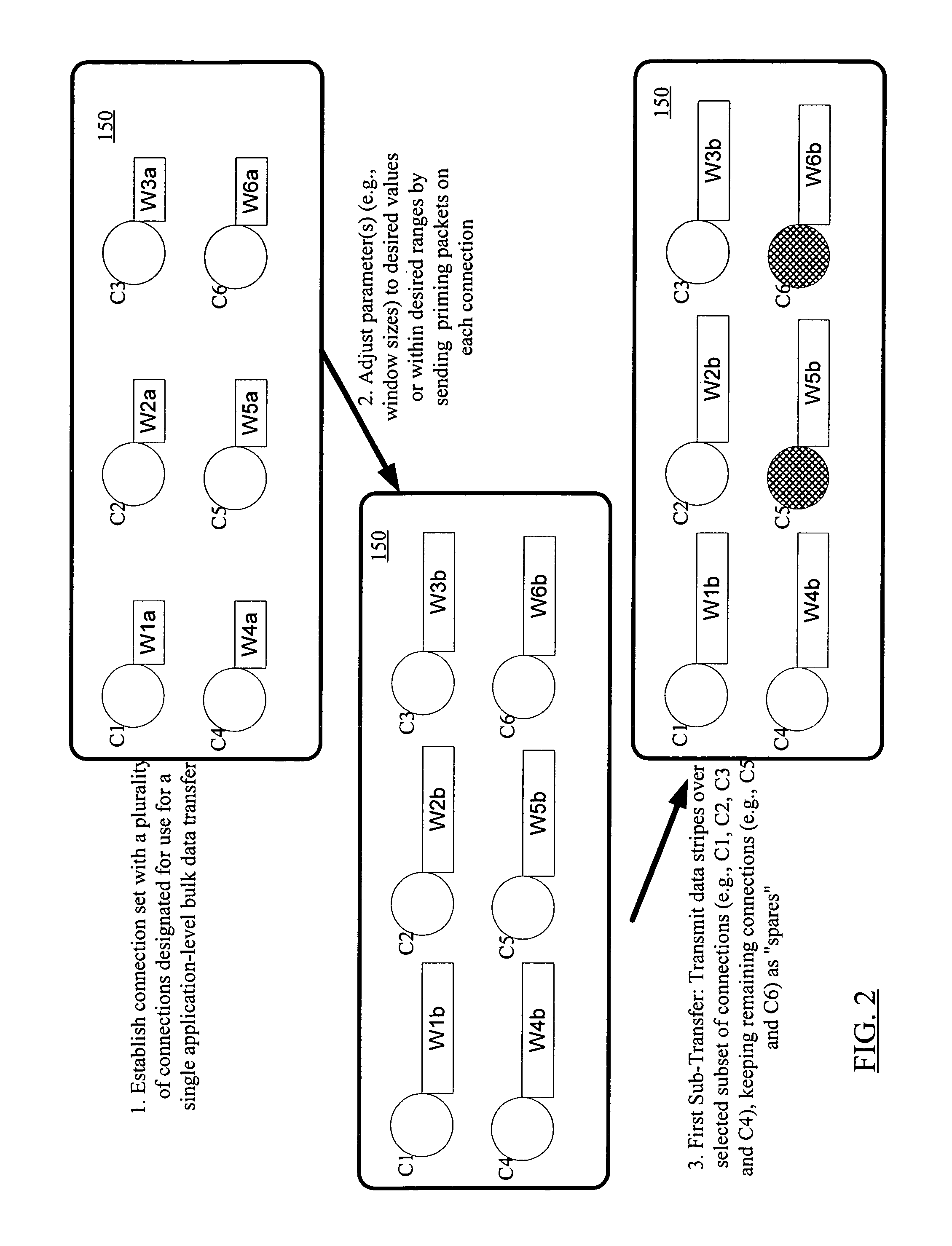Bulk network transmissions using multiple connections primed to optimize transfer parameters
a network transmission and network traffic technology, applied in the field of computer systems, can solve the problems of large amount of processing and/or bandwidth, automatic retransmission of all packets, and high cost of retransmission, and achieve the effect of increasing the probability of access and excessive retransmission-related costs
- Summary
- Abstract
- Description
- Claims
- Application Information
AI Technical Summary
Benefits of technology
Problems solved by technology
Method used
Image
Examples
Embodiment Construction
[0023]FIG. 1 is a block diagram illustrating a system 100 according to one embodiment. As shown, system 100 comprising a plurality of network endpoints 110 (e.g., endpoints 110A-110P) linked to a network 115 that includes a plurality of network devices 130 (e.g., network devices 130A-130N). An endpoint 110 may include any of a variety of devices, such as computer servers, desktops, laptops, personal digital assistants, mobile telephony devices, television set-top boxes, audio receivers, etc., configured to support applications 120 (e.g., application 120A at endpoint 110A, application 120B at endpoint 120B, and so on) that require network access and perform at least some bulk data transfers over the network. Traffic managers 170 (e.g., traffic manager 170A at endpoint 110A, traffic manager 170B at endpoint 170B, etc.) at one or more of the endpoints 110 may be configured to establish and maintain a plurality of connections corresponding to each bulk transfer to be performed (e.g., co...
PUM
 Login to View More
Login to View More Abstract
Description
Claims
Application Information
 Login to View More
Login to View More - R&D
- Intellectual Property
- Life Sciences
- Materials
- Tech Scout
- Unparalleled Data Quality
- Higher Quality Content
- 60% Fewer Hallucinations
Browse by: Latest US Patents, China's latest patents, Technical Efficacy Thesaurus, Application Domain, Technology Topic, Popular Technical Reports.
© 2025 PatSnap. All rights reserved.Legal|Privacy policy|Modern Slavery Act Transparency Statement|Sitemap|About US| Contact US: help@patsnap.com



